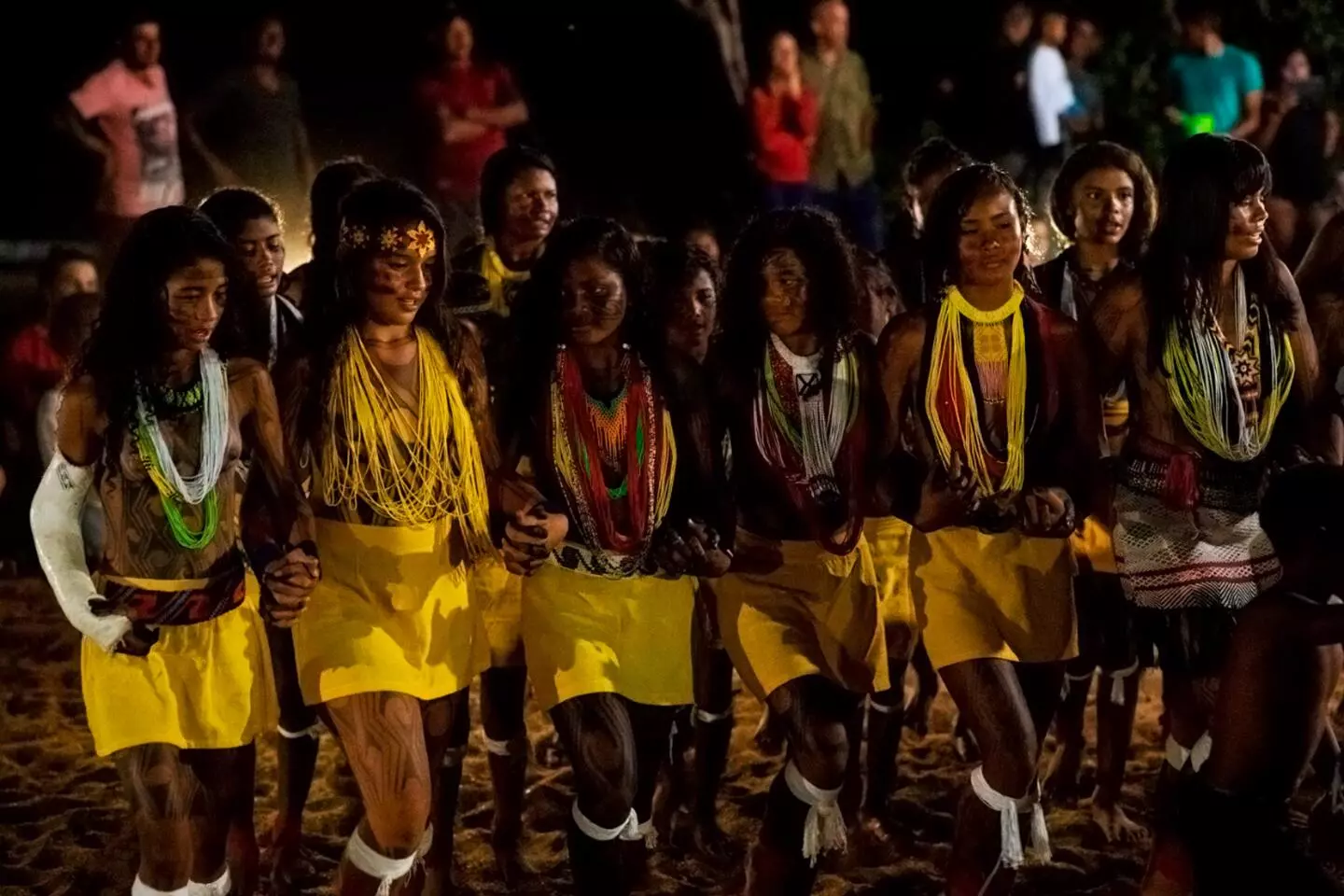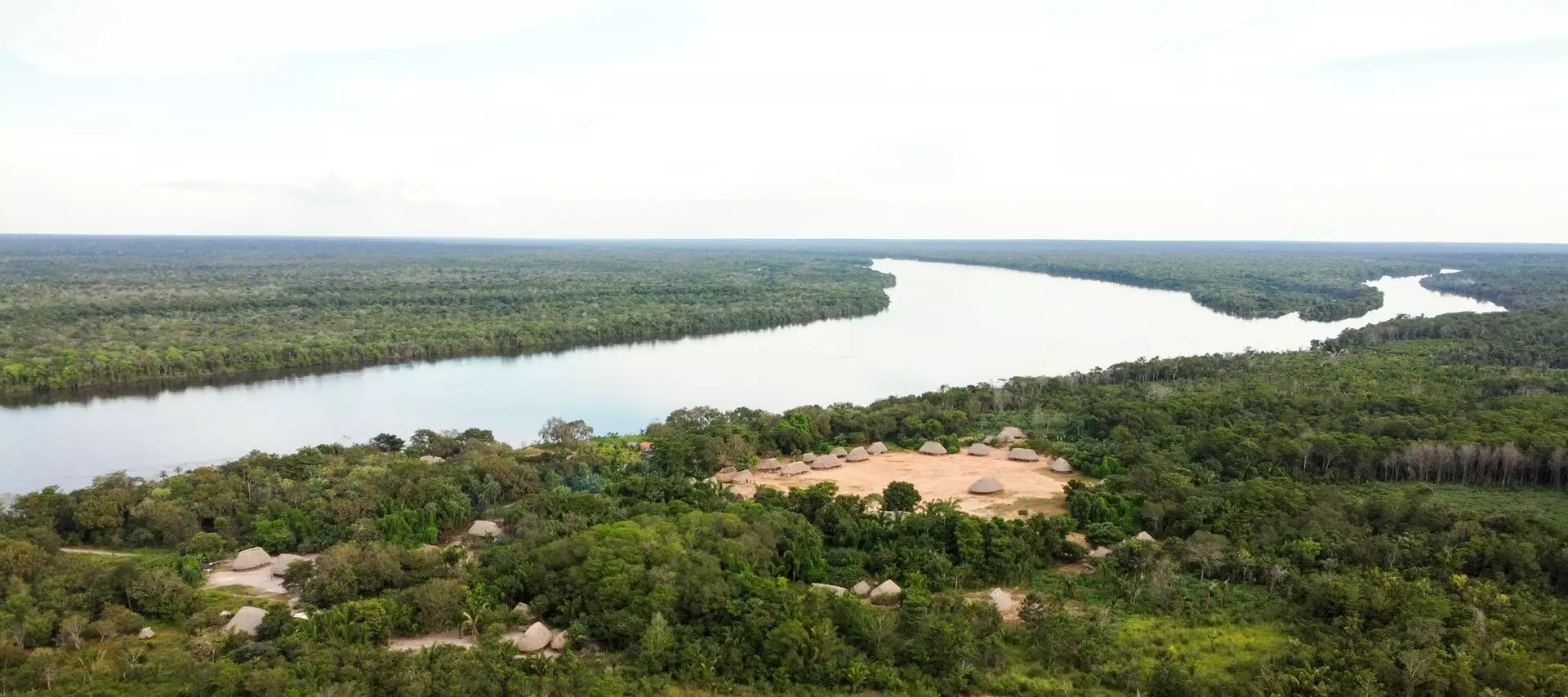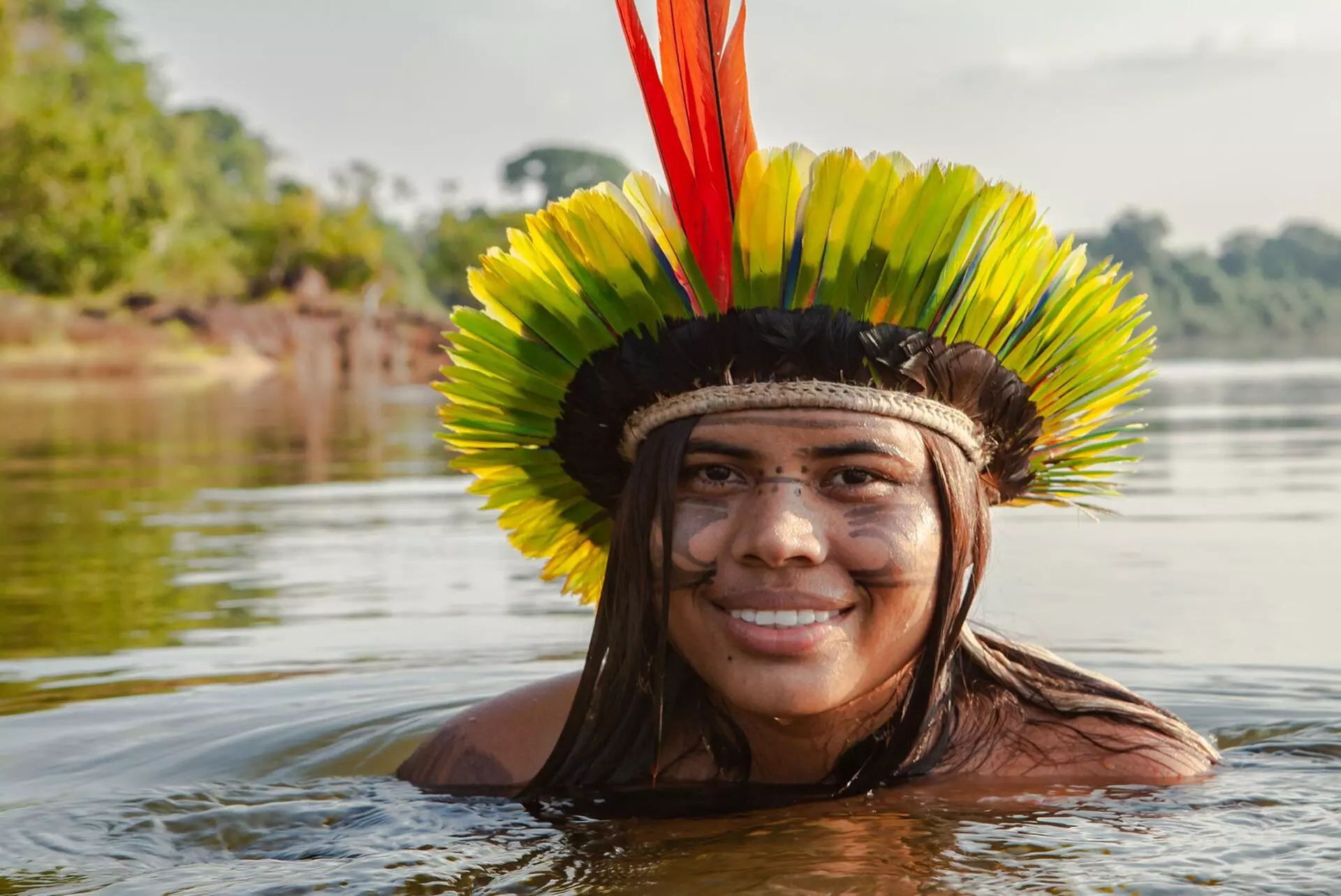Belo Monte dammed the river’s waters and, as the Yudjá-Juruna say, caused the world to end. Yet before the world ended, they decided to make a long journey in search of relatives from whom they had been separated for nearly a century. Railane, 19, and Weslane, 24, Yudjá-Juruna women from Volta Grande do Xingu, spent weeks investigating this story, interviewing Natanael, a teacher and education coordinator in Mïratu Village, where they live, their grandfather Agostinho (the community’s chief elder), and their cousin, Ya Juruna, a young woman who took part in this long quest.
They live in the Paquiçamba Indigenous Territory, where the Xingu River has carved out a large meander, hence the name Volta Grande do Xingu (literally “Big Bend of the Xingu”). They belong to this river, which begins in Mato Grosso and runs across nearly 2,000 kilometers, crossing Pará before it kisses the Amazon. Its existence, like that of its daughters and sons, is threatened by the ecocide brought about by the Belo Monte Dam, which now sequesters 70% of the water that formerly fed Volta Grande’s human and non-human lives and which has now made the powerful Xingu River into its own private water tank.
This report in podcast form is the first publication of the first edition of the Micélio-Sumaúma Forest-Journalists Co-Training Program. Since May, fourteen people from the Médio Xingu region – four Indigenous persons, three members of traditional ribeirinho forest communities, a quilombola (member of a Brazilian Maroon community), a smallhold farmer, a fisherwoman, an Indigenous health nurse, and young people from marginalized areas of urban Altamira – take part in meetings in the forest and in the city, accompanied daily by ment-sow-ors, senior Sumaúma journalists, who are in turn accompanied by them, because this is real co-training joined to everyday life. The ment-sow-ors on this first story are Letícia Leite; Vem de Áudio, which produces podcasts with forest peoples; and Maickson Serrão, the host of Rádio Sumaúma and the Pavulagem podcast.
Coordinated by Raquel Rosemberg, co-founder of Engajamundo, the Micélio-SUMAÚMA educational approach deliberately avoids any orthodoxy. The program, created by Eliane Brum (who is also in charge of supervision and content) and Jonathan Watts, maintains the rigor, responsibility, and accuracy of traditional journalism. Micélio-SUMAÚMA also includes psychoanalyst Ilana Katz, providing care consulting, and producer Thiago de Sousa Leal. Mônica Abdalla is responsible for managing the Program’s finances, with administrative and financial assistant Marina Borges and financial consulting from Mariana Zahar. Micélio-SUMAÚMA receives funding from the Moore Foundation and the Google News Initiative.

Raylane Juruna (second from right), a participant in the SUMAÚMA Mycelium, with her sisters and cousins at a cultural presentation in the Miratu village. Photo: Miratu Village Archive
Each of the myceliants – or “mysalients,” as they prefer to be called – receive a monthly scholarship, equipment, and are guaranteed internet in their communities, which is preferably installed in a public space, such as a school or health facility. Like Sumaúma, Micélio is not about individuals; it’s about communities. And each of them was chosen by their community or collectively and has godmothers and godfathers accompanying them in their villages, extractive reserves, settlements, etc. Most of them are women, because Sumaúma intervenes for gender. Of the fourteen, nine are women.
Micélio-Sumaúma is what will make Sumaúma a journalism platform reporting from the Amazon. Our newsroom will grow starting with these new reporters. Each issue of Micélio will look at a different region in the Amazon, because we know that the forest can only be understood in the plural. Not only are they irrigating the Sumaúma newsroom, but they will also create their own initiatives or will join other independent initiatives already in place in the Amazon. Sumaúma believes in collaborative networks. We, the creators of Sumaúma, are a bridge-team. The goal, set out in our project and plan, is for Sumaúma to be entirely comprised of and led by forest journalists within the next ten years.
Starting on this one-year anniversary, we will begin to publish the initial reports created through the Micélio-Sumaúma experience. At the start of this investigation by the Yudjá-Juruna reporters, they wanted to understand what happened in the past and answer the question: Why were we separated?
Listen.
Fact check: Plínio Lopes
Spell check (Portuguese): Elvira Gago
Translation into Spanish: Julieta Sueldo Boedo
English translation: Sarah J. Johnson
Photography editing: Lela Beltrão
Page setup: Érica Saboya

Tuba Tuba village on the banks of the Xingu River. Photo: Are Juruna







